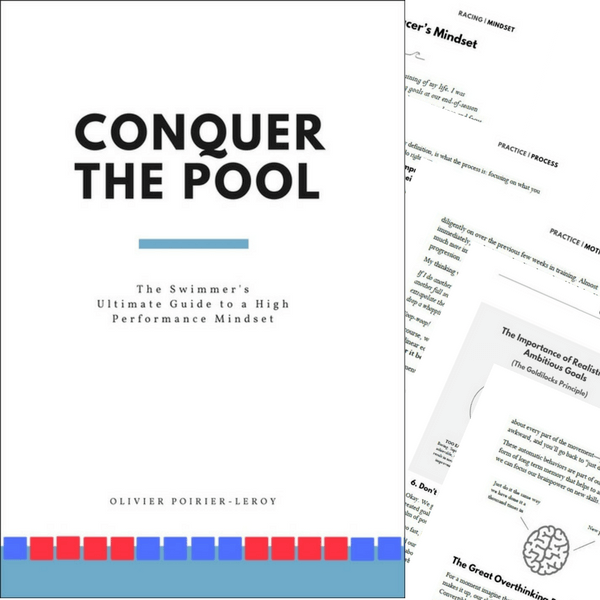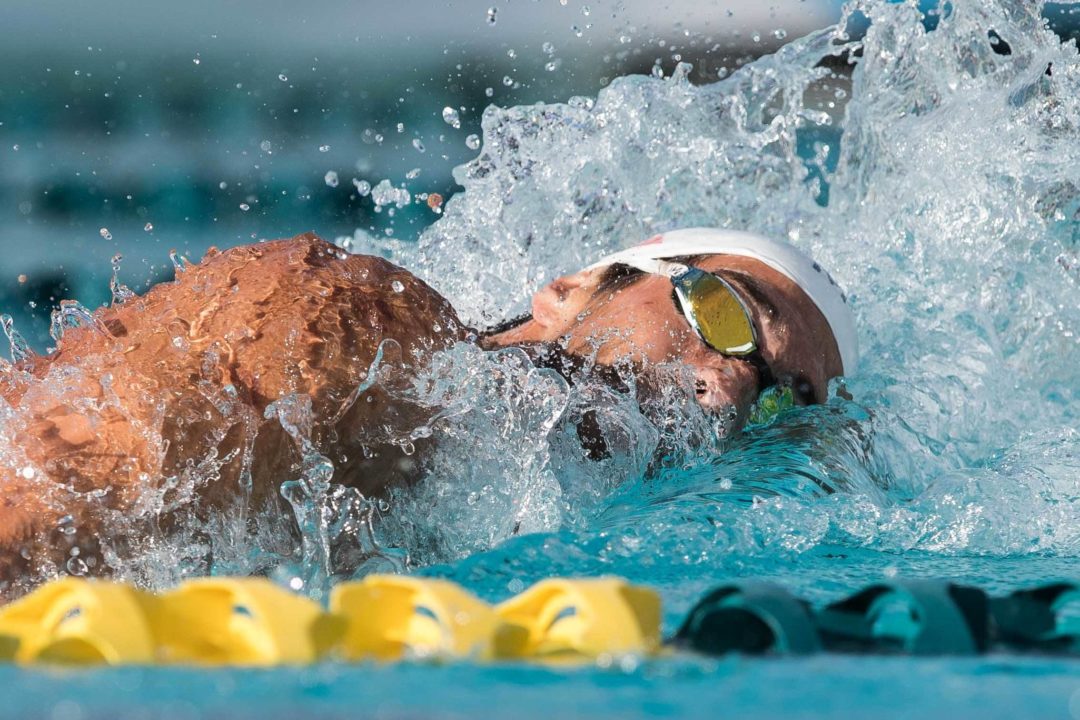Faster freestyle swimming starts with efficient technique. Here are seven tips for improving your freestyle stroke technique.
Want to swim faster and more efficient freestyle?
Improve your freestyle technique?
Swim faster with less effort?
Heck ya, you do!
Here are seven tips on how to improve your freestyle technique from some of the best swimmers and coaches on the planet.
Work your early vertical forearm
The most common biomechanical error in the freestyle stroke is a soft or dropped elbow during the front part of the pulling phase.
The early vertical forearm helps your fingers to point at the bottom of the pool faster and as Russell Mark, a high-performance consultant for USA Swimming notes, helps you to “hook” the water sooner.
There are variations of the early vertical forearm depending on the distance you are swimming.
A sharper elbow bend is most efficient, helping you grab more water, is generally wider, and most frequently used for longer swimming. A straighter elbow pulls less water but is more power-centric and suited to sprinters.
Catch all the water you can with front sculling
Strong forearms propel you through the water. Often, you will see a swimmer’s hands and palms collapse and fold during the pulling motion. Strong forearms keep your “paddle” pointed in the right direction.
Anthony Ervin, when he went to the University of California as a freshman, had all the talent, but it was developing his technique at Cal under Mike Bottom that propelled him to the next level.
A focal point of improving his technique was increasing how much water he was catching with each stroke, “as opposed to just swimming laps back and forth.”
One of the tools that Ervin used to catch more water at the top of his stroke was sculling.
“Front sculling helps strengthen our forearms,” said Ervin. “The forearms are the basis for being able to hold the catch all the way through your stroke. I think about the catch and applying it while I am swimming.”
Breathe properly
When swimmers over-rotate to breathe, they end up looking up at the ceiling and/or looking backward, throwing the body out of alignment.
According to Bob Bowman, US Olympic coach and long-time coach of the greatest swimmer in history, your head shouldn’t move independently of your body when you breathe.
“Rotate your head in-line with your body,” he says. A simple cue for swimmers to accomplish this is to breathe with one goggle in the water, one out. “Try to take your breath with one goggle in the water,” he says.
Balance your body in the water
The biggest battle swimmers face in the water isn’t the intervals, the threshold sets, or the brutal swim workouts…
It’s the constant and unyielding resistance the water forces upon us. Swimming your fastest freestyle means you are doing everything you can to keep an efficient body position in the water, and this means putting your head down and your hips up, so that you can keep a minimal drag profile in the water.
Use proper head position in the water to balance your body.
“You want to press your forehead down in the water until you feel your hips pop up,” says Bowman.
Although elite swimmers will pick their head up a little when swimming freestyle, for the rest of us, snow-plowing the water with our foreheads creates more drag, causes the hips to sink (more drag), and throws our body line out of position (yup, more drag).
Count your strokes
Russian sprinter Alexander Popov is an absolute legend in the sport. He dominated the sprint freestyle events for around a decade, winning back-to-back gold medals in the 50 and 100-meter freestyles.
His freestyle stroke was exceptionally smooth and consistent and was based on a consistent focus on rhythm, relaxation, and range.
The range aspect came into play with Popov aiming for a consistent stroke count during every lap of freestyle. When Brett Hawke interviewed the former world record holder recently, Hawke asked how often Popov counted his strokes in training.
“Every length,” Popov said. “Every length.”
Getting into the habit of counting your strokes in the water will encourage you to swim more efficiently and with better technique. You will see how your stroke technique breaks apart under fatigue. And it will give you additional metrics in the water to improve.
Kick like a champion
“The best kickers tend to be the best freestylers,” said University of Texas head coach Eddie Reese.
One study with national-level age group swimmers found that the kick provided 30% (males) and 33% (females) of propulsion during high-intensity efforts.
“The kick is propulsive,” notes Mark.
But a strong freestyle kick does more than just get you from one side of the pool to the other. Kicking powerfully and efficiently reduces drag, gives you a foundation for a strong rotation, and drives the stroke.
When kicking while swimming freestyle, try to minimize knee bend and kick from your hips. Work the up phase of the kick, spend time improving your ankle flexibility, and focus on kicking within your body line in the water.
Do drills with intent and focus
In the quest to develop exceptional freestyle technique, we use a variety of freestyle drills to over-emphasize certain parts of the stroke.
Closed fist freestyle, hand drag, shark fin drill, freestyle arms with dolphin kick, and so on.
Often, drills are performed as a form of recovery instead of technical improvement. Or they are rushed through.
Nathan Adrian, Olympic champion 100-meter freestyler, notes that freestyle drills should be done with enough rest so that they are done properly.
“Go slow and take plenty of rest,” says Adrian. “Nothing bothers me more than coaches that put in new or really difficult drills on tough intervals. There is a time and place for that. It is not, however, when trying to perfect a new skill.”
Whatever freestyle drills you end up doing in the water, do them with full intent and focus.
More Freestyle Stroke Resources:
6 Freestyle Drills for Better Technique and Faster Swimming. Unlock a smoother and more efficient freestyle with this collection of my favorite freestyle drills.
Single-Arm Freestyle: Nathan Adrian’s Favorite Free Drill. Olympic freestyle champion Nathan Adrian shares tips on how to perform his top freestyle drill, single-arm freestyle.
ABOUT OLIVIER POIRIER-LEROY
Olivier Poirier-Leroy is a former national-level swimmer, author, swim coach, and certified personal trainer. He’s the author of YourSwimBook, a ten-month logbook for competitive swimmers.
 He’s also the author of the recently published mental training workbook for competitive swimmers, Conquer the Pool: The Swimmer’s Ultimate Guide to a High-Performance Mindset.
He’s also the author of the recently published mental training workbook for competitive swimmers, Conquer the Pool: The Swimmer’s Ultimate Guide to a High-Performance Mindset.
It combines sport psychology research, worksheets, anecdotes, and examples of Olympians past and present to give swimmers everything they need to conquer the mental side of the sport.
Ready to take your mindset to the next level in the pool?
Click here to learn more about Conquer the Pool.

Thanks, this is helpful!
“The kick is propulsive”! Many on this site disagree
Some on this site can kick faster than many of those who disagree can swim.